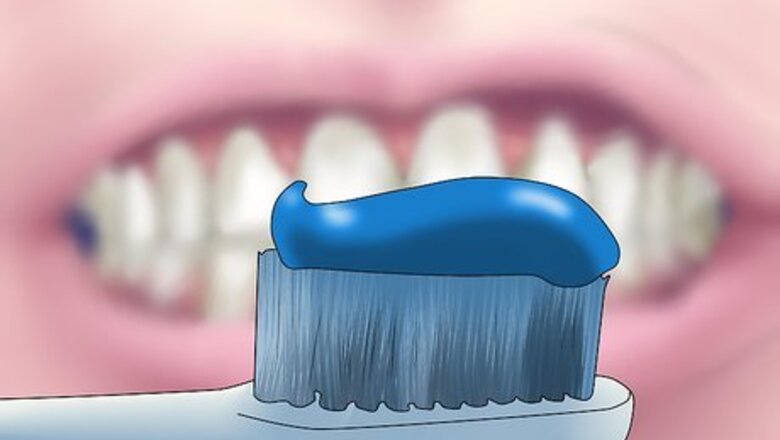
views
Preventing Bone Loss
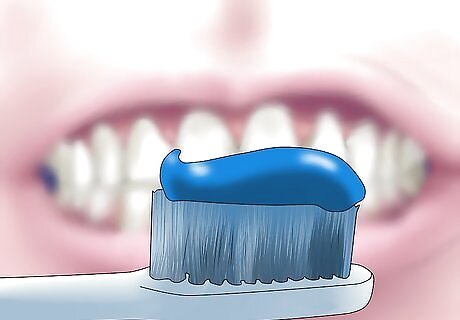
Prevent dental bone loss by maintaining excellent oral hygiene. To avoid having to undergo expensive bone grafting procedures, prevent dental bone loss from occurring. Preventing it is fairly easy, provided you take the necessary steps. All you have to do to maintain excellent oral hygiene is follow a few simple steps: Brush your teeth thoroughly every after meal - Brushing your teeth at least twice a day can prevent gum diseases. Brushing removes the plaque that is responsible for gum diseases and dental bone loss. Floss after brushing. Flossing gets rid of plaque that isn't removed by brushing. It is imperative that you floss after brushing because there might be plaque that remained in your teeth that were not reached by the bristles of your brush.

Visit your dentist regularly to have thorough teeth cleaning done. Tooth decay is one of the leading causes of dental bone loss. Tooth decay can be prevented by regular visits to your dentist to receive a thorough cleaning and comprehensive dental care. To preserve your dental bone, you must also keep all your teeth healthy. Visit your dentist every six months for routine cleaning, a must in order to maintain excellent oral hygiene. Regular consultation with your dentist enables him/her to monitor your oral health and prevent developing gum problems. X-rays can be taken to clearly reveal areas of dental bone loss. If you miss your routine dental check-ups, you may only find out about bone loss at a stage when it might not be reversible.
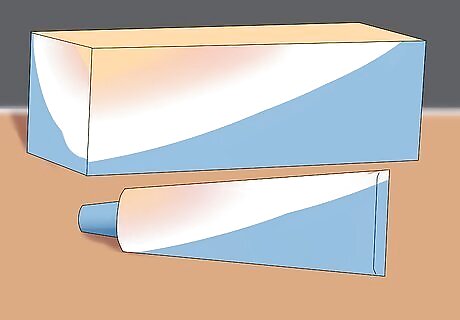
Use fluoride toothpaste when brushing. Fluoride toothpaste can protect your teeth and gums from bone loss by, providing necessary minerals to your bones and tooth enamel. Excessive use of fluoride other than toothpaste is not recommended, as it may lead to other health problems. Use fluoride-based toothpaste once a day to brush your teeth, otherwise use normal toothpastes. Do not use fluoridated toothpaste in kids below the age of 10 years.
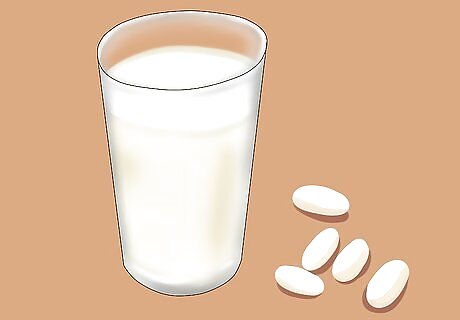
Increase your intake of calcium to support bone health. Calcium is a critical nutrient to the health of all your bones, including your teeth. Calcium-rich foods and calcium supplements make sure your system receives the adequate amount of calcium needed to build up and strengthen your bones and teeth, increasing your bone density and reducing your risk of dental bone loss and bone fracture. Foods like low-fat milk, yogurt, cheese, spinach and soy milk are rich in calcium and are important for the maintenance of strong teeth and bones. Calcium is also available in supplement tablets. Take 1 tablet (Caltrate 600+) after breakfast and 1 tablet after dinner. Should you miss one dose, take it as soon as you remember it.
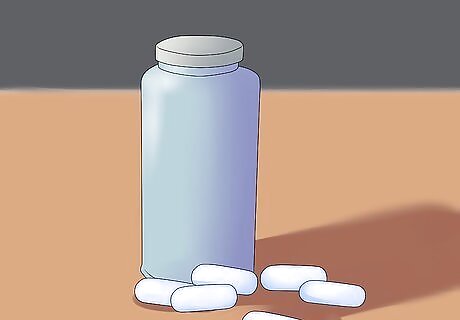
Make sure you get enough vitamin D to absorb your calcium properly. Take a vitamin D supplement or get some sun to ensure that you have the proper levels of vitamin D in your body. Vitamin D helps increase your bone density by helping your body absorb and retain calcium in your system. To determine if you are suffering from insufficient vitamin D, ask your doctor if you could have a blood test to measure the amount of vitamin D in your blood. A result of less than 40ng/mL indicates insufficient vitamin D in your blood. The recommended amount of vitamin D in your blood is 50 ng/mL. Take 5,000 IU of a vitamin D supplement daily.
Reversing Bone Loss With Medical Assistance
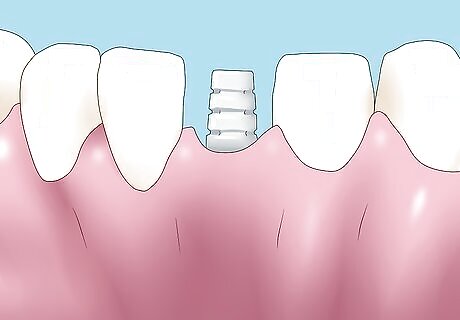
Undergo bone grafting to reverse bone loss. It is very difficult to grow back dental bone that has already been lost. At present, the only way to completely reverse dental bone loss is to undergo bone grafting. When you undergo a bone grafting procedure, you can expect the wound to heal within 2 weeks. Your dentist might tell you that you will have to wait for 3-6 months before seeing the result of the bone grafting procedure. Bone grafting to reverse dental bone loss can be divided into three main types of procedure, discussed below.
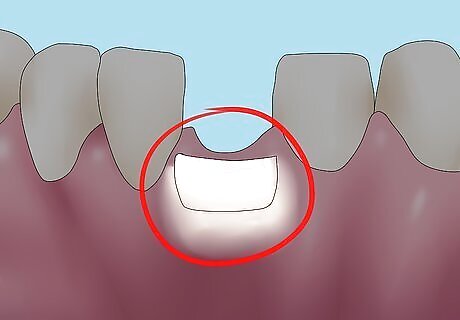
Get an osteogenesis-type bone graft to promote the regrowth of bone. In this procedure, bone will be taken from a source (an area of your jaw, mandible, etc.) and transferred to the area where you have dental bone loss. The bone cells that were transferred will start to multiply and create new bone to replace the bone that had been lost. Taking bone from one place in your body and implanting it into the site where there is bone loss is the gold standard in bone grafting. This technique allows your body to readily accept the new bone cells because it recognizes them as its own. The transplant of bone marrow is often used in osteogenesis.

Investigate osteoconduction bone grafts to provide a scaffold for bone growth. In this process, a bone graft is implanted to the site where there is bone loss. These implants will serve as a scaffold where bone-forming cells (osteoblasts) can grow and multiply. An example of a scaffold material is bioactive glass. Together with the bone grafts, bioactive glass is transplanted to the area where there is bone loss, to regenerate dental bone. These bioactive glass serve as scaffold on which the bone grafts can grow and lay down bone. They also release growth factors that make the bone-forming cells more effective in laying down bone.
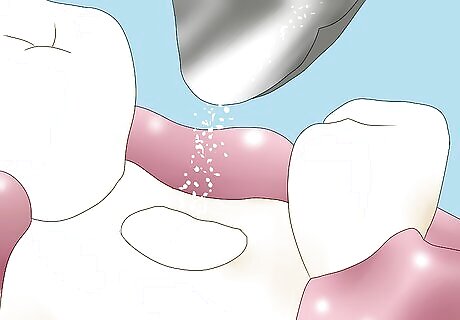
Try osteoconduction to promote stem cell growth. In this technique, bone grafts, such as Demineralized Bone Matrix (DBM), from cadavers and bone banks are transplanted to the area where there is dental bone loss. DBM grafts will cause stem cells to grow where there is missing bone, and these stem cells will transform into osteoblasts (bone-forming cells). These osteoblasts will heal the bone defect and will form new dental bone. Although some studies support the use of DBM grafts, more research needs to be done to determine whether it is effective. The use of DBM grafts from cadavers is legal and safe. Before the transplant occurs, all of the grafts will be sterilized thoroughly. After making sure that it is safe for transplant, the bone graft will be tested to see if it suits the body of the recipient. This is important to make sure that the transplant will not be rejected by your body.
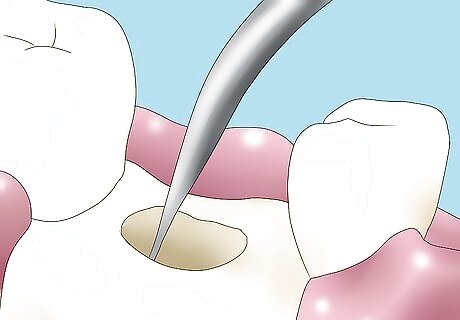
Undergo deep scaling to get rid of an infection causing bone loss. Deep scaling or non-surgical root planing is a deep cleaning technique, often needed if you are diabetic. During this procedure, the root area of the teeth is cleaned thoroughly to remove parts of the root that have been infected by the bacteria that is causing bone loss. Usually after deep scaling, gum disease will be controlled and no further dental bone loss will occur. If you have diabetes you may have impaired healing and require additional dental precautions like antibiotics and antibacterial mouth rinses. You may be prescribed doxycycline 100mg/day for 14 days. This compensates for your impaired immune system. Chlorhexidine rinses can also be prescribed to kill the bacteria responsible for severe gum diseases. You will be asked to rinse with 10 milliliters (0.34 fl oz) of 0.2% chlorhexidine (Orahex®) for 30 seconds for 14 days.[3]
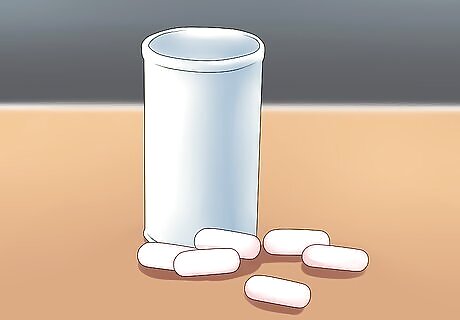
Have estrogen replacement therapy to prevent osteoporosis. Estrogen can help prevent osteoporosis and maintain the mineral content of your bones, by slowing down your bone loss. Hormone replacement therapy can also reduce your risk of heart disease and bone fractures. Although some studies support the use of estrogen for osteoporosis, this treatment increases the risk of blood clots, breast and endometrial cancer, and heart disease. There are a few ways to get estrogen replacement therapy, of which the following are the most common: Estrace: 1-2 mg daily for 3 weeks Premarin: 0.3 mg daily for 25 days The following are estrogen skin patches that are also used in estrogen replacement therapy. These patches are worn on the stomach, below the waistline: Alora Climara Estraderm Vivelle-Dot
Understanding Risk Factors and Catching Symptoms Early
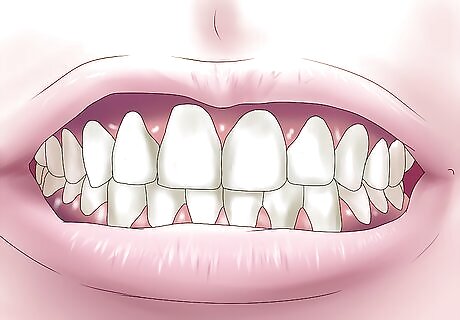
Recognize the signs and symptoms of dental bone loss to address it effectively. Dental bone loss in its early stages is difficult to detect just by looking at your teeth. Dentists usually need radiographs or a CT-Scan to see if your bone is shrinking. If you haven't consulted with your dentist for a long time, chances are you'd only realize that you have dental bone loss during its more severe stages. You can observe some changes if you are suffering from bone loss. These changes happen because your bone is shrinking and supporting your teeth less effectively. Note that these changes only develop over time: Flaring of teeth Formation of spaces in between teeth Teeth feel loose and can be moved from side to side Tilting of teeth Rotating of teeth Your bite feels different compared to before

Understand that severe gum disease is a leading cause of dental bone loss. Periodontitis or severe gum disease, caused by the bacteria found in plaque, results in dental bone loss. The bacteria present in plaque inhabit your gums and secrete toxins that cause your bone to shrink. Additionally, your immune system can contribute to bone loss as it is in the process of killing bacteria. This is because your immune cells secrete substances (e.g., matrix metalloproteinases, IL-1 beta, prostaglandin E2, TNF-alpha) that can also promote bone loss.
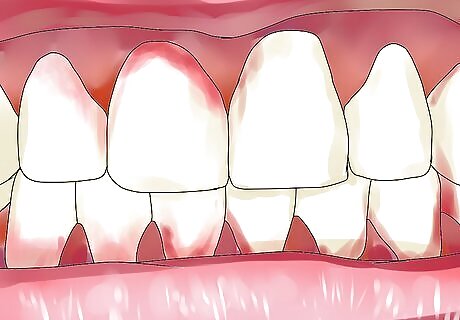
Know that diabetes contributes to an increased risk of bone loss. Diabetes is a disease that is caused by the impairment of insulin production (Type I) and resistance to insulin (Type 2). Both types of diabetes have effects on oral health. People suffering from diabetes often have severe gum problems that can result in dental bone loss. People with diabetes are hyperglycemic, or have elevated blood sugar levels that promotes the growth of bacteria responsible for bone loss. People with diabetes have impaired host defenses because their white blood cells are weakened, making them more prone to infection.
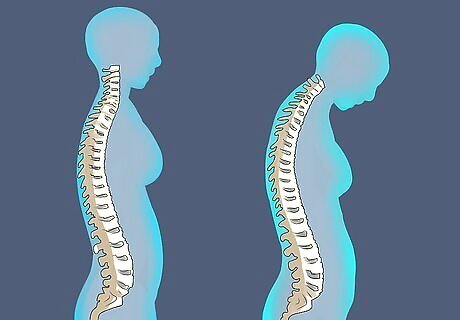
Be aware that osteoporosis contributes to general bone weakness and bone loss. Osteoporosis is a disease often seen in women over the age of 60, wherein bone density decreases. This decrease is due to an imbalance in the calcium-phosphate equilibrium that helps maintain the mineral content of bone, combined with decreased estrogen levels. A decrease in overall bone density also affects dental bone, putting it at risk for bone loss.
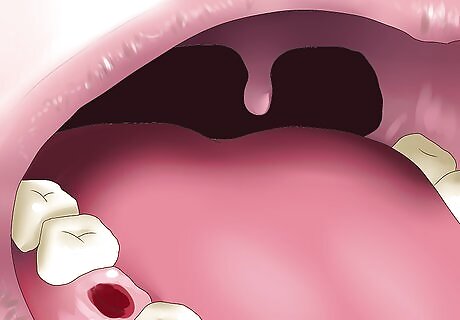
Remember that getting teeth removed can lead to bone loss. Dental bone often shrinks as soon as you lose your teeth. After teeth removal, a blood clot will form and white blood cells go to the site where your tooth was previously located to clear the area of bacteria and damaged tissue. A few weeks after, new cells will go to the area to continue this clearing process. These cells (osteons) can promote bone formation. However, these cells will only do so in the presence of teeth, because they demand bone for support. Since there are no teeth, there won't be any function for the bone and these cells will not create new bone.


















Comments
0 comment